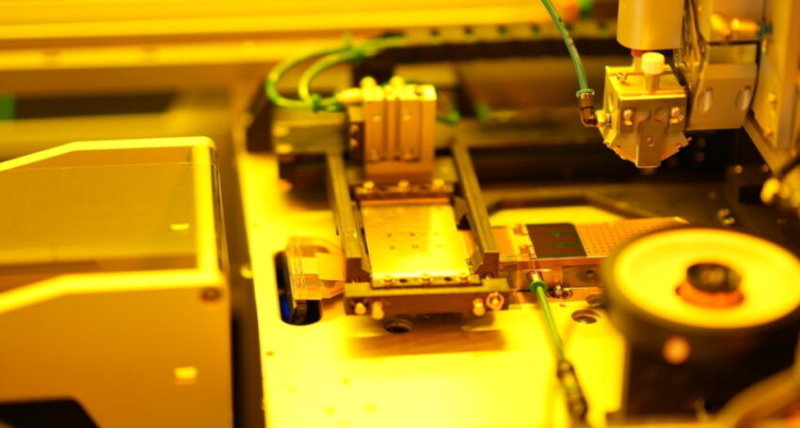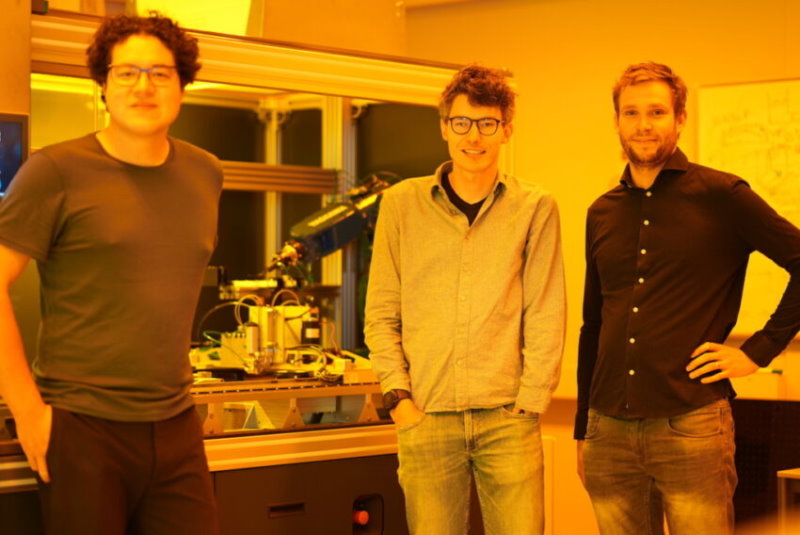
Fonontech lands €2.3M for impulse printing chip packages and flat screens
After a decade of exploring and developing the market, Fonontech is getting ready to scale up a printer capable of producing both advanced chip packaging and flat displays. The startup has landed 2.3 million euros in a seed investment round. This round was made possible through convertible loans of the TTT Smart Industries Fund, Shift Invest, the Brabant Development Agency (BOM), the Brabant Startup Fund (BSF) and investor Sake Bosch. Rabobank has also granted a loan. The goal is to gain a foothold in the microelectronics assembly market, an industry that analysts expect to double to 78 billion euros in the next five years.
Fonontech was founded in 2022 as a spinoff of TNO at Holst Centre in Eindhoven to bring impulse printing to the market. The startup has now built a demo machine that proves that the technology works. The system fills microspores on a silicon plate with conductive ink, after which a short but violent pulse of current is sent through the wires within this mold, causing an eruption of heat that fires the pattern onto a substrate. “It even works at a distance of half a meter, although you do sacrifice some precision,” says CEO Rob Hendriks, laughingly.

Fonontech’s business model doesn’t revolve around equipment sales. According to Hendriks, his company wants to focus on the supply of consumables, the plates with the microcartridges. The impulse printer works with common conductive inks, which is why suppliers of those materials fully support the Eindhoven startup.
Push through the limit
Together with his technical right-hand man Fabien Bruning, Hendriks explains that there are two major opportunities. On the one hand, there’s the back-end semicon that wants to be able to apply advanced trace patterns for new packaging techniques such as hybrid integration. Fonontech is working on a small industrial R&D machine that these types of customers can start experimenting with. The company is currently expanding its team to bring this Impulse Beta Tool to the market.
Hendriks and Bruning also see a lot of interest in the flat-panel display (FDP) market. There, selling their core technology is probably the best option – the printhead and the filling mechanism, so without the substrate handling. For their business model, it makes no difference: both markets need micromolds. Depending on the application, Hendriks estimates that each mold will last a thousand to ten thousand ‘exposures.’
Fonontech is looking to build a core system with a 128-by-128-millimeter printhead. Such a system will be able to print panels measuring 600 by 600 mm, a format that’s currently making its way into back-end assembly. It can also print entire 300 mm wafers.
The same format can be used in FDP manufacturing. Hendriks and Bruning are mainly thinking of displays with micro-LEDs that manufacturers put together from a large number of individual tiles. Impulse printing brings an added advantage to this industry. It enables the application of contact lines across the edge, making it possible to assemble large displays from individual tiles in fewer steps. “Traditional manufacturing techniques are stretched to the limit. Our impulse printing solution will push through this limit,” states CTO Bruning.

Sustainable assembly and manufacturing
In a press release, Fonontech claims its technology also helps reduce the ecological impact of microelectronics production by a factor of 1,000. “Today’s lithography-based processes consist of many complex steps with high carbon emission rates that are difficult to reduce. Impulse printing is an additive process, copying a pattern thousands of times at very high speed, while only depositing material in required places.”
Hendriks adds, “Our ambition is to become the global market leader in sustainable assembly and manufacturing of microelectronics. This means scaling up as quickly as possible.”





